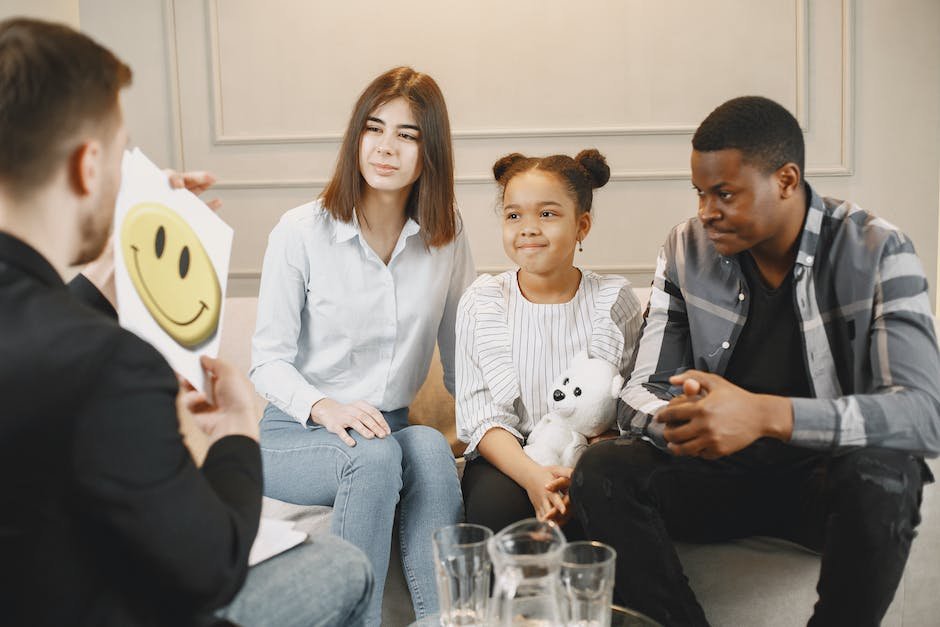
Navigating the journey of ABA (Applied Behavioral Analysis) therapy can be complex and often an emotional experience for parents whose children are on the autism spectrum or exhibit specific behavior difficulties. Though it is an essential early intervention tool for many, there comes a point when it becomes necessary to start thinking about transitioning out of the program. This transition process, often a major step for a child’s progress, can bring its own set of challenges and concerns for families. Therefore, it becomes essential to recognize when the child is ready to move on and how to ensure a smooth process while maintaining the progress achieved.
Understanding When to Transition out of ABA Therapy
Guiding Your Child through the Transition from ABA Therapy
When it comes to ABA therapy (Applied Behavioral Analysis), every child has a unique journey based on their own needs, progress, and personal development. A crucial part for many parents comes when it’s time to consider whether their child has outgrown the need for this specific form of therapeutic intervention. It’s a significant chapter in the parenting journey and as such, it deserves the utmost attention and care.
Firstly, always remember, it’s a process that needs to be approached with patience. This journey is not a race but a gradual transition that needs careful planning and thought. On that note, here are some pointers that can help decipher whether it’s time to consider transitioning your child out of ABA therapy.
- The first, and perhaps the most complex signal, is when the child shows significant development and improvement in social skills and the ability to control or navigate challenging situations. Success can be measured by the child consistently demonstrating these improved skills in different settings like school, playdates, and family events.
- Moreover, consider whether the child has achieved most, if not all, of the goals initially set out in their individualized treatment plan. Successful completion of goals is a significant indicator of progress and can often suggest the child is ready to transition out of the therapy.
- Communication with the ABA therapist is an essential part of this journey. Therapists are a vital source of advice and support, so don’t hesitate to discuss any worries or concerns. They have seen the child’s progress and can provide valuable input on when it might be an appropriate time to transition out of ABA therapy.
- Smoothly integrating into their peer groups and being able to make and sustain friendships can be seen as significant progress. This shows they have developed critical social skills and peer interactions – crucial markers of development that can hint at the right time for a transition.
- Parents often see a decrease in the frequency of the need for ABA therapy sessions as the child demonstrates significant progress. This is a promising indicator suggesting that the child might be ready for a transition.
One thing to remember is that every child is unique and their transitioning timeline might look different from others. It’s important to stay patient, understand the process, and most importantly, celebrate each milestone achieved, no matter how small.
The journey of a child transitioning out of ABA therapy is indeed a poignant chapter in their development and growth. By looking out for these signs and staying connected with therapists, parents can ensure they recognize this critical stage and initiate a smooth transition for their child. As challenging as it might be, it’s also a testament to the resilience of the child and the unwavering patience, strength, and perseverance of the parents.
While there isn’t a strict playbook for parenting, arming oneself with knowledge, understanding, patience, and love can make a world of difference – not just to the child, but for the entire family. After all, every child’s victory is a family’s shared joy. Let’s embrace this journey towards growing together, learning together, and celebrating the significant milestones along the way.

Steps in Transitioning Out of ABA Therapy
Let’s build on the key elements we’ve already explored. The next natural thing to consider is the formation of a detailed, execute-in-stages plan. Bear in mind that transitioning is not a linear process – it’s not a switch-on, switch-off way – it’s more intertwined, much like the beautifully chaotic layers of life. Staging down therapy implies a reduction in the number of hours of therapy per week, but this needs to be carried out methodically and under professional supervision.
Begin by having a heartfelt discussion with your child’s ABA therapy team. Include your child’s school professionals if need be, because a cohesive support structure is instrumental at this juncture. Discuss the potential of decreasing therapy more assertively in favor of increasing naturalistic and more inclusive settings for learning. Consent, collaboration, and collective decision-making are the bedrock of a successful transition out of ABA therapy.
Next, trading the structured ABA therapy programs with more generalized, lifestyle-targeted skills training should be considered. It’s important to ensure your child can generalize learned skills across various situations. Shifting towards broader life skills like personal hygiene, time management, money management, and self-care can go a long way in this process.
On that note, it’s important to assist your child in fostering a greater degree of independence. Simplifying tasks into manageable, single steps can be an enormous aid in achieving this goal. Prompting the child to initiate these tasks can help them grow more comfortable with independence.
Don’t shy away from asking the ABA therapist to start working on previous goals in novel ways to promote generalization. For example, if a child has already learned to play a game in therapy, the therapist might then help the child learn to play the same game in different environments, with various rules, or with new partners.
Keep in mind that every child is unique – there’s no one-size-fits-all approach here. The importance of purely child-specific and family-specific strategies cannot be overstressed. You know your child best, you love them most and you root for them in a way no one else can. After all, love and understanding can build the strongest of bridges – ones that can carry your child towards integrating fully into the mainstream.
While considering the transition out of ABA therapy, remember that regular assessments during this phase are beneficial. Regular assessments facilitate making necessary corrections, adjustments, and allow you a clearer vision for future planning. Stay in close contact with those involved in your child’s care, and opt for regular feedback sessions to ensure you are on the right track.
As a closing note, make sure your child is always aware of what’s happening. Encourage them to express their feelings and thoughts about the transition. An expressive and understanding family setting is a safe haven that provides kids with the assurance they need to sail through transitions and come out stronger.
Transitioning out of ABA therapy is a uniquely challenging process that commands a deep presence, understanding, and tact. But with your love and the professional support of the ABA therapy team, successfully navigating this transition is absolutely possible. Through sharing these tips and methods, this platform aims to lay down stepping stones to help guide you, as a parent, along the journey. Good luck!

Maintaining Progress Post ABA Therapy
Maintaining Growth Beyond ABA Therapy: A Loving Guide for Parents
As loving parents, we know that every notch on the growth chart, every new word, every triumph over a challenge—big or small—is worth celebration. Equally, each step a child takes post-ABA therapy is among the fondest milestones. It’s a testament to the resilience of their little hearts, the wonderful work of their therapists, and most definitely, your unwavering support.
One key factor in the continued progress of children post-ABA therapy is a strong support structure. A well-knit group—comprising family, friends, teachers, and therapists—can provide the warmth and nurturing a child needs to thrive. These are the people who will understand, empathize, motivate, and cheer your child on as they navigate their world.
With gradual, supervised decrease in therapy hours, we can help our children acclimate to fuller, more naturalistic environments. These environments play a crucial role in fostering social skills, enhancing empathy, and increasing resilience. The playground, the hobby class, or even the neighborhood barbecue, are all fantastic arenas for your child to interact with ‘neurotypical’ peers – an important milestone in their social development journey.
An essential element of the transition is the generalization of learned skills. Can your little one utilize a skill learned in therapy while interacting with a new friend or during a family dinner? If yes, that’s brilliant progress! The aim is to ensure they can apply these skills across various situations, sometimes even without noticing they’re doing so. Simple tasks that promote independence, like tying shoelaces, setting the table, or picking up toys, help to reinforce skills learned during ABA therapy.
Rearranging familiar tasks in a novel way is another wonderful strategy for generalization. For example, if your child has mastered a puzzle, consider changing the game: Can they create the same puzzle upside-down or while wearing funny glasses? Encouraging them to find solutions to these new challenges helps sharpen their problem-solving skills.
Remember, as each child is unique, so should be the post-ABA strategies. It’s advisable to work closely with your child’s therapist to devise an approach that best suits your child and your family. This should be an ongoing process, with regular assessments to tweak strategies where necessary.
Through this transition, open communication helps immensely. Encourage your child to express their thoughts and emotions freely. Regular, heartfelt talks about their feelings, victories, and struggles can provide valuable insights into their journey, allowing you to guide them more effectively.
Finally, there’s our secret weapon—love. Shower your child with love and appreciation, reminding them how incredibly special they are. Celebrate their bravery in facing challenges and their resolve in overcoming them. The unwavering love of parents, along the right professional support, can be the most powerful catalyst in smoothing the transition and ensuring our children continue to soar post-ABA therapy.
After all, our kids might have come into our lives like small stars, but with the right support, understanding, and love, they will grow to outshine the entire galaxy, and we get to have the front-row seats to that magnificent spectacle.

Leaving ABA therapy does not signify an end but rather an evolution in the child’s development journey. It is a vital step indicating that your child has acquired significant skills to navigate their world with lesser assistance. Throughout this process, it is key to continue incorporating learned strategies into daily routines and significantly, not to hesitate to seek professional inputs whenever necessary. Remember, every child’s journey is unique, and although the path may have its challenges, the transition away from ABA therapy should be seen as a testament to their growth and progress.




